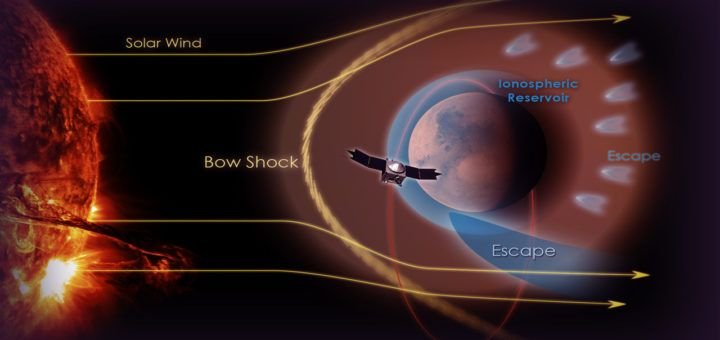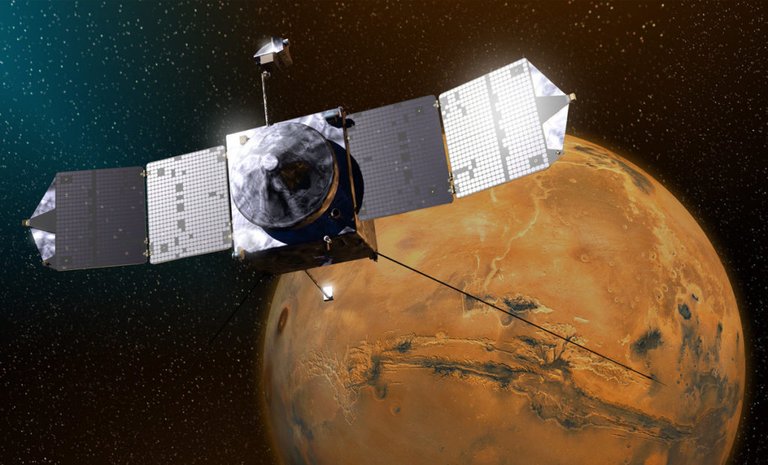
Mars has an invisible magnetic “tail” that is twisted by interaction with the solar wind, according to new research using data from NASA’s MAVEN spacecraft.
The spacecraft MAVEN (Mars Atmosphere and Volatile Evolution Mission), which orbits the Red Planet, gathers data on atmospheric and water loss to see if it could have sustained life in the distant past.
Analyzing these data has revealed that Mars has a magnetic field that can be seen in the shape of a queue with its back to the Sun and influenced by the star, writes Science Daily.

“We have discovered that this planet’s magnetic queue is unique in the solar system,” said Gina DiBraccio of NASA’s Goddard Space Flight Center.
“It’s not like Venus’s magnetic tail, a planet that does not have a magnetic field, and it’s not like Earth’s, which is surrounded by its own magnetic field generated by the core. It’s a hybrid between the two, “DiBraccio added.
“Our model predicts that magnetic reconnection leads to tail rotation by 45 degrees than expected based on the direction of the magnetic field of the solar wind,” according to the researcher.
“Mars has lost most of its magnetic field billions of years ago, leaving only fossil magnetic fields in some regions of the planet.
According to the new study, the magnetic tail is formed when the magnetic field brought by the solar winds encounters the magnetic fields on the surface of the Red Planet.
The solar wind is a continuous stream of electrified gas coming from the solar surface and has a speed of 1.6 million kilometers per hour, and with it comes the magnetic field.
If it is in a direction opposite to the Martian magnetic field, the two fields meet in magnetic reconnection.
The research was funded by the MAVEN mission. MAVEN began its primary science mission in November 2014 and is the first spacecraft dedicated to understanding Mars’ upper atmosphere.
MAVEN’s principal investigator is based at the University of Colorado’s Laboratory for Atmospheric and Space Physics, Boulder. The university provided two science instruments and leads science operations, as well as education and public outreach, for the mission.
NASA Goddard manages the MAVEN project and provided two science instruments for the mission, including the magnetometer.
Lockheed Martin built the spacecraft and is responsible for mission operations. The University of California at Berkeley’s Space Sciences Laboratory also provided four science instruments for the mission.
NASA’s Jet Propulsion Laboratory in Pasadena, California, provides navigation and Deep Space Network support, as well as the Electra telecommunications relay hardware and operations
References:
https://www.matrixdisclosure.com/maven-mars-unique-magnetic-field/
Congratulations @matrixdisclosure! You have completed some achievement on Steemit and have been rewarded with new badge(s) :
Click on any badge to view your own Board of Honor on SteemitBoard.
For more information about SteemitBoard, click here
If you no longer want to receive notifications, reply to this comment with the word
STOPHi! I am a robot. I just upvoted you! I found similar content that readers might be interested in:
http://www.top10listverse.com/2017/10/maven-breakthrough-mars-has-unique.html